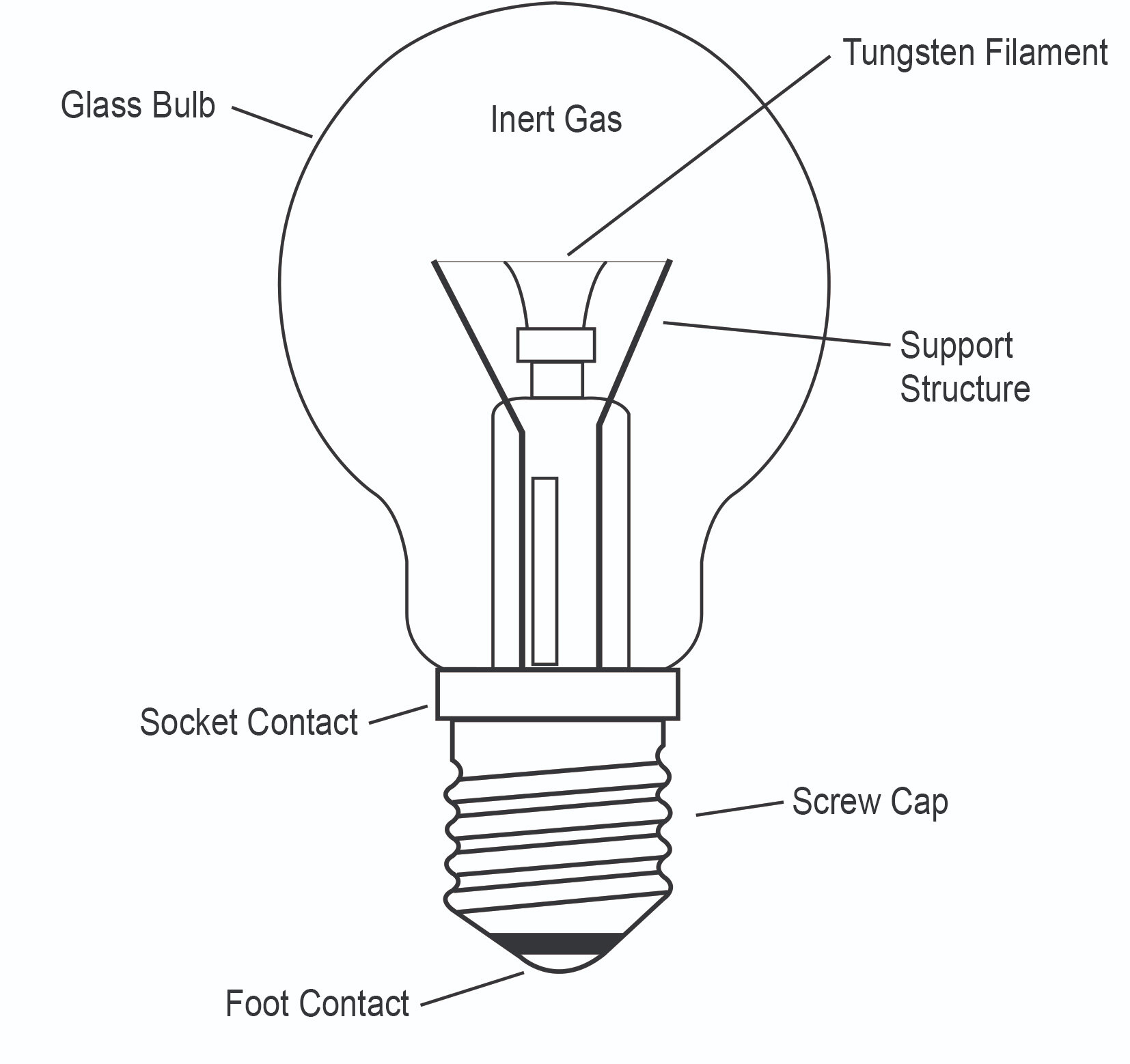Incandescent bulbs are all electric bulbs whose light comes from a strongly heated and thus glowing wire made of tungsten. Another name for incandescent bulbs are temperature radiators, as the majority of the radiation emitted is in the infrared range of the electromagnetic spectrum, which is not visible to the human eye, and thus escapes as heat radiation. Not least because of this inefficiency, most incandescent bulbs, at least when new, have been declared banned for trade by the EU.
The Structure of an Incandescent Bulb

The glowing metal wire is surrounded by a glass bulb filled with gas or empty of air. The typical bulb shape of the classic Edison incandescent bulbs has led to incandescent bulbs also being generally referred to as light bulbs in everyday language. The glow of the wire is achieved by electrical charge carriers (electrons) flowing between negative and positive voltage poles, as in virtually all electrical devices and equipment.
The basic structure of all incandescent bulbs are the same, although there are many variants that differ in important details. Halogen bulbs are incandescent bulbs that contain halogens or other noble gases to extend the life of the tungsten wire while saving energy. While the classic incandescent bulbs (E27 base) and the smaller incandescent bulbs (E14 base) work with the normal mains voltage of 230 volts, the so-called low-voltage halogen lamps have an upstream transformer that transforms this voltage, which is life-threatening when it comes into contact with the human body, which also conducts electricity, into a protective extra-low voltage.





